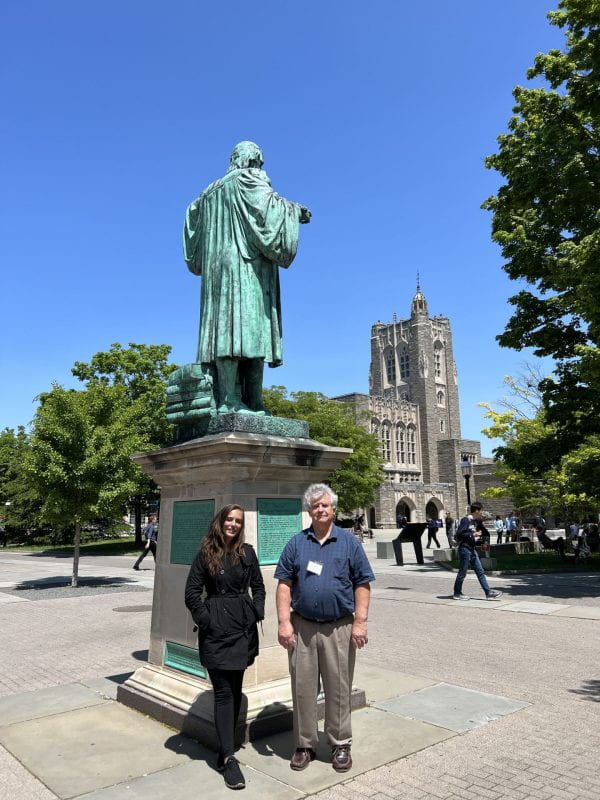Student Presents Research on Rapid Intensification of Hurricanes

 Rapid intensification of hurricanes is a big challenge for forecasting – models cannot reliably predict rapid intensification even within 24 hours. The recent well-publicized cases include Hurricane Maria 2017 and Dora 2023 wreaked havoc in Puerto Rico and caused catastrophic fires in Maui. Nearly 75% of major hurricanes go through the phase of rapid intensification.
Rapid intensification of hurricanes is a big challenge for forecasting – models cannot reliably predict rapid intensification even within 24 hours. The recent well-publicized cases include Hurricane Maria 2017 and Dora 2023 wreaked havoc in Puerto Rico and caused catastrophic fires in Maui. Nearly 75% of major hurricanes go through the phase of rapid intensification.
Kerry Emanuel (MIT) and Roger Lukas (UH) were among the first to emphasize the importance of studying the two-phase environment and microphysics at the air-sea interface under hurricanes. More recently NSU’s Physical Oceanography Laboratory (Halmos College of Arts and Sciences) in collaboration with the University of Miami, the University of Rhode Island, and the University of Hawaii linked the microphysics of the air-sea interface to the phenomenon of rapid intensification of hurricanes. This research has been published in several peer-reviewed journals. NSU’s Halmos College of Arts and Sciences Ph.D. student Breanna Vanderplow continues research in this new direction.
Breanna’s research focuses on the impact of surface-active materials (surfactants) on hurricane intensity and rapid intensification. She implemented a state-of-the-art computational fluid dynamics model on an NSU supercomputer that allows simulation of microphysics down to scales of tens of micrometers. This model includes the effect of sea surface tension on sea spray and bubbles in up to Category 5 hurricanes.
Breanna presented her work at meetings in South Korea (organized by Korean Typhoon Center), at Heidelberg University, and at Princeton University. She received an award for the Outstanding Student Oral Presentation at the 35th American Meteorological Society Conference on Hurricanes and Tropical Meteorology.
Breanna is planning to defend her dissertation work on this subject in early December 2023.
“I believe Breanna’s dissertation is on the level of the best U.S. and international oceanographic organizations. This work provides an important step toward better understanding of rapid intensification and development of a new generation of hurricane forecasting models. Breanna is a role model for the next generation of NSU students,” said Professor Alexander Soloviev, Ph.D., the physical oceanography laboratory lead and Breanna’s adviser.
Posted 11/26/23